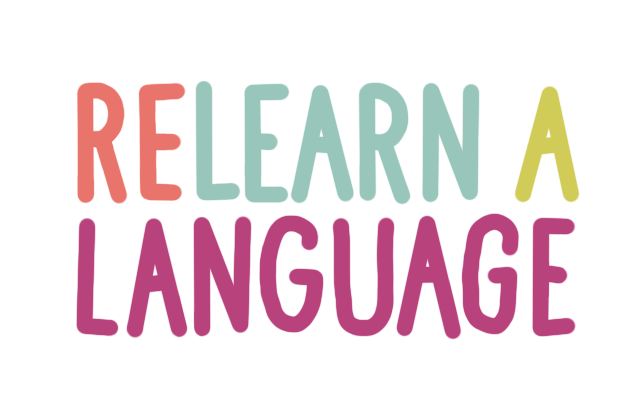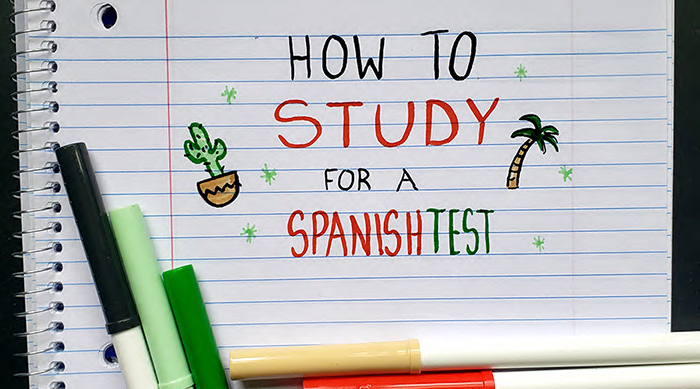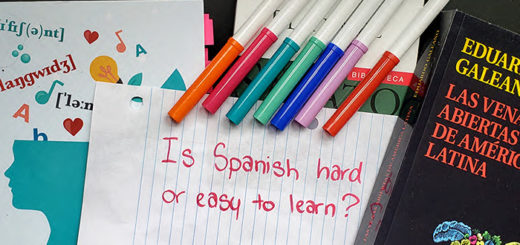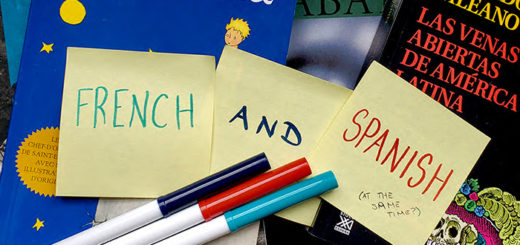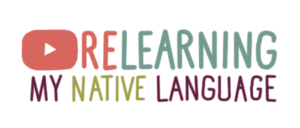How to Study for a Spanish Test
If you’re trying to figure out how to study for a Spanish test, you’re either (1) panicking, (2) frustrated, or (3) both.
The good news is that I promise you that you have found the best page online to prep you for a Spanish test.
I know because I failed out of high school Spanish and then became fluent as an adult.
I know what doesn’t work for language learning and what works really, really well.
I’ve used these tips for studying in all of the languages I speak and they’ve been vetted by several Spanish teacher friends of mine.
Because you probably don’t have a lot of time to waste, let’s jump right in.
NOTE: These tips are largely written for people who don’t speak Spanish at home. If you do speak Spanish at home and are also enrolled in a Spanish class in school with non-Spanish speakers, this article will help you too--but what will probably help you more are my YouTube channel where I talk extensively about people like you and me who are having to learn their native language in classes. (I know: it’s a struggle.)
1. Figure out your Spanish test timeline
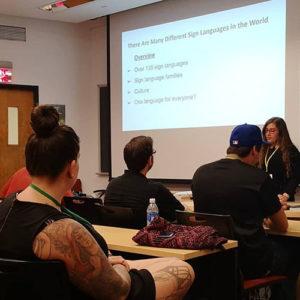
After failing out of high school Spanish, I now not only speak 6(ish) languages but spend my free time learning about learning languages. Check out the back of my head / high bun while I learn about sign languages at LangFest, Montreal.
Cramming sucks.
Not only because it’s boring and stressful, but because it really doesn’t work.
If you’re already in a last-minute-mode for your Spanish test, we’ll give you a few things to help you here (don’t worry).
But in general: the less you procrastinate, the better you’ll be able to keep Spanish vocabulary and grammar in your head.
Going forward in this article I’m going to explain every concept and then give you actionable tips.
- ⏰ will be the emoji for the tips for how to study for a Spanish test when you have to cram (less than 3 days)
- 📅 will be the emoji for tips for how to study for a Spanish test when you have a better schedule (4+ days, but ideally how to study 5min every day all semester long)
- 👄 will be the emoji for special polyglot tips. These are people who don’t only want to study for a Spanish test but actually want to learn Spanish. That might not be everyone reading this article, but they’ll be put aside for anyone interested.
So if you have less than three days, you’re in cram mode ⏰.
If you have 4+ days, you’re in slow-and-steady-wins-the-race 📅 .
Either way, I gotchu covered.
2. Know what type of Spanish tests your teacher likes to give
Every teacher is going to give a different type of test.
Generally, Spanish tests are going to fall into a few different categories (and many will be a combination of these things)
- Multiple-choice / fill in the blank – Normally these are for a vocabulary or verb conjugations.
- Written – You might read or listen to something, and then have to respond by writing full sentences
- Oral – You might read or listen to something (or even be in a conversation) and have to respond by speaking
How you study for your Spanish test should be informed by what kind of test you’re expecting.
Let’s break them up by types of exercises that work (or don’t work) depending on the type of test your teacher might give.
How to study for a multiple-choice / fill in the blank Spanish test
These are by far the easiest Spanish tests a teacher might give you.
All you have to do is put one piece of information to something that’s already been formed, so all you have to do is memorize bits and pieces.
Like I said above, these will most likely be for individual words or verb conjugations.
Here are some things that won’t help you study for your test:
- If your teacher doesn’t use a word bank (that is, a set of words to choose from), it won’t help you to study from a word bank. You’ll need to produce the words without clues.
- Unless your teacher puts a whole verb chart onto your test, it won’t help you to study the whole chart. You’ll need to know tu tienes independently from tengo / tienes / tiene / tenemos etc.
What will help you though?
Flashcard apps built for these kinds of tests.
Let’s look at 3 examples based on the types of questions your teacher might give you.
FILL IN THE BLANK NOUN – On one side of the app you’re going to put a picture of a beach. On the other side, you’re going to put “la playa”. Picture, word, boom. Just don’t forget the gender!
FILL IN THE BLANK VERB CONJUGATION – On one side you’re going to put “you have”. On the other side, you’re going to put “tu tienes”. Repeat for every person (I, you, usted, he/she, we, vosotros if you study that, and they/ustedes) and every verb so you have every combination.
FILL IN THE BLANK ADJECTIVE – On one side, put the English word. On the other side, the Spanish word. (Don’t forget to add both masculine and feminine endings if you need to.
So which app should you use?
- ⏰ The app Cram was built for crammers. You can take your own photos right from your textbook and import them to one side of the digital “card”. Then you can write your answer on the other side of the card. Boom.
- 📅 This process will be much, much better if every time you’re assigned new material you put it into an app called Anki. It looks like it’s a million years old but it’s the all-time best study app for long-term getting new things into your head. I swear. The trick is, however, you need to do it every day. (It’ll only take you 2-5min a day though, so it’s not any big thing.)
- 👄 Make sure you’re translating from both English into Spanish and Spanish into English. And if you really want to do it right, add audio files to your cards.
How to study for a Spanish test with listening or speaking
Most tests have some speaking or writing components.
These things are honestly just a lot harder to do--but in real life, this is how we learn languages. Not with multiple-choice quizzes.
Here you’re going to build on your above-mentioned vocabulary and verb work by doing something called chunking.
The idea is that individual words (ex: cat) don’t exist alone in a conversation. They exist in ready-made chunks (my cat is), and those chunks make up sentences (my cat is black).
So here’s an example about how you can use this idea to help you study for your Spanish test.
And let’s say you’re learning about time. It doesn’t make sense to study just the word “después” (after) when in Spanish you must always say “depués de”. So you should always study “después de” together.
Hunger? “Hambre.” But you don’t say I’m hungry--but I have hunger. “Tengo hambre.” So instead of studying the word for hunger alone, you would study the full phrase.
Little things like this caused me a lot of problems before I knew about chunking.
Here’s how we can use chunking to study for your Spanish test.
- Go look at your unit vocabulary and practice sentences.
- Make a huge list of all of those most-used sentences because that’s what your teacher will be pulling from.
- Now, when you have that list, you’re going to pull those sentences apart into their most basic forms.
Examples:
- A mi me gusta ir a la playa (me gusta + full verb form)
- A mi me gusta ir a la playa (you always ir a somewhere, never just ir)
- No quiero dormir ahora (quiero + full verb form)
- Tengo más de uno hermano (más de + number = number comparison)
- Tengo más trabajo que tu (más + object + que = comparison )
You’ll see these same patterns over and over in the unit you’re learning. So you’ll have not only a ton of sentences your teacher will likely use on your Spanish test, but also be able to break apart and put together the patterns.
(I’m sorry to any teacher who is reading this and sees that I’m giving away their secrets. But you should totally hire me for consulting work for your district.)
4. Now what do you do with these?
- ⏰ Fill your cram app with these practice sentences, but also make up your own sentences using the formulas you discovered with other individual words that are also in your Cram decks. English to Spanish + Spanish to English (so you see both sides of the card).
- 📅 Using a pen and paper, write out your “language formulas” at the top of the paper. (For example: “más de + number”). Then fill the paper with as many sentences as you can think of, but only add 1 or 2 sentences a day over the course of a few weeks. (So on Tuesday you might add “tengo más de tres gatos” and “tenemos más de dos clases”. On Wednesday you might add “¿Tienes más de tres primos?” and so on.)
- 👄 Do you have a friend who also wants to really learn Spanish? Using the Whatapp voice note feature, practice coming up with these constructed sentences together. Send each other random voice notes using these chunked equations. So one day you might ask “¿Tienes más de dos hermano? Porque yo tengo más de tres hermanas pero no tengo hermano.” This will be the best test prep of your life.
3. Active Recall: your secret study weapon
One of the things I never understood was why I could perfectly understand Spanish when reading it but then could never get a good grade on a test.
And I mean like never.
As an adult, I found out about active recall.
I don’t know why no one ever explained how to memorize vocabulary to me (or even how to study), but that’s why I’m writing this article now.
Here’s a video that explains it quickly and awesomely.
(You only need to watch from 0:38 to 3:51 for our purposes.)
So let’s talk about how you can use this information to study for a Spanish test.
- ⏰ All of your flashcards need to go from Spanish to English and from English to Spanish. You can’t just put “yo tengo” on one end of a card and know that it means “I have”. In a test, you have to be able to produce yo tengo, so you need to practice producing Spanish. You cannot use hints or a word bank because you won’t have them on the test.
- 📅 You have to practice doing what you want to be good at. This means making sure your flashcards go both ways (like it says above) but also means producing full sentences. My advice is to look up Spanish practice tests online and take them as warm-ups for your own test, as well as journaling without looking at your notes. Once you’re done, check to see how you did and learn from your mistakes. Even if you do badly on these practices, you’ll do so, so much better on the real one.
- 👄 Once you get to intermediate Spanish classes (A2.2 and above on the European scale) find an online exchange friend using Instagram hashtags like #languageexchange, #studygrammexico or #studyingEnglish. You can find another student to practice with while you help them in their English. (This is the advice I wish someone had given me earlier!)
This also explains why reviewing charts or the same notes doesn’t work at all.
(I really, really wish someone had told me this when I was in high school.)
4. Plan ahead for your next Spanish test
No matter what your score is on this Spanish test, you can do a lot better on the next one and pull your grade up.
Now’s the perfect time to start planning for how to study for your next Spanish test or final.
Especially if you hate studying, this will make studying way more painless and way easier.
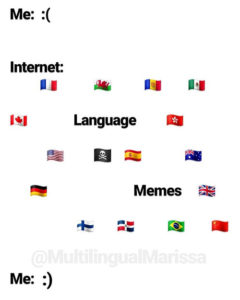
I make language memes on Instagram as @MultilingualMarissa
⏰ Sorry crammers. If you’re cramming for a test now, keep all of your flashcard app files saved--you’ll likely see the same questions again. But starting after this test, you need to vow to study for 5min a day every day until the end of your Spanish class (or until you fulfill your school-required credits). This will make your life 45294x better, I promise.
📅 What you want to do is maintain your growing lists of writing prompts and cards and check on them every day. The reason I love Anki so much is because your cards will accumulate long-term, so if you get really good at a word you’ll see it less and less--but it’ll pop up again at the point where you may have forgotten it. Just plan for 5min a day of reviewing these decks or doing small paragraphs of random sentences based on the unit you’re studying.
👄 Find an online community of Spanish learners on Instagram or TikTok. You’ll be a million times more motivated to keep studying even when you’re not in class because, honestly, speaking a bunch of languages is a superpower. But you’ll need real long-term work if you want to build up to that.
Bonus tip – how to memorize vocabulary
I recently wrote an article about How to Improve French Vocabulary.
Even though you’re studying Spanish and not French, if you’re serious about learning languages there’s a lot of great stuff on that post you might benefit from.
.
Was this article helpful for you? Share it with friends you have in class and help them study. (Wouldn’t you want them to share it with you?)
Do you have a question that wasn’t covered by this article? Leave it in the comments and I’ll answer. I know how hard it was for me to learn how to study for a Spanish test, so I’m happy to help anyone younger who needs it.
